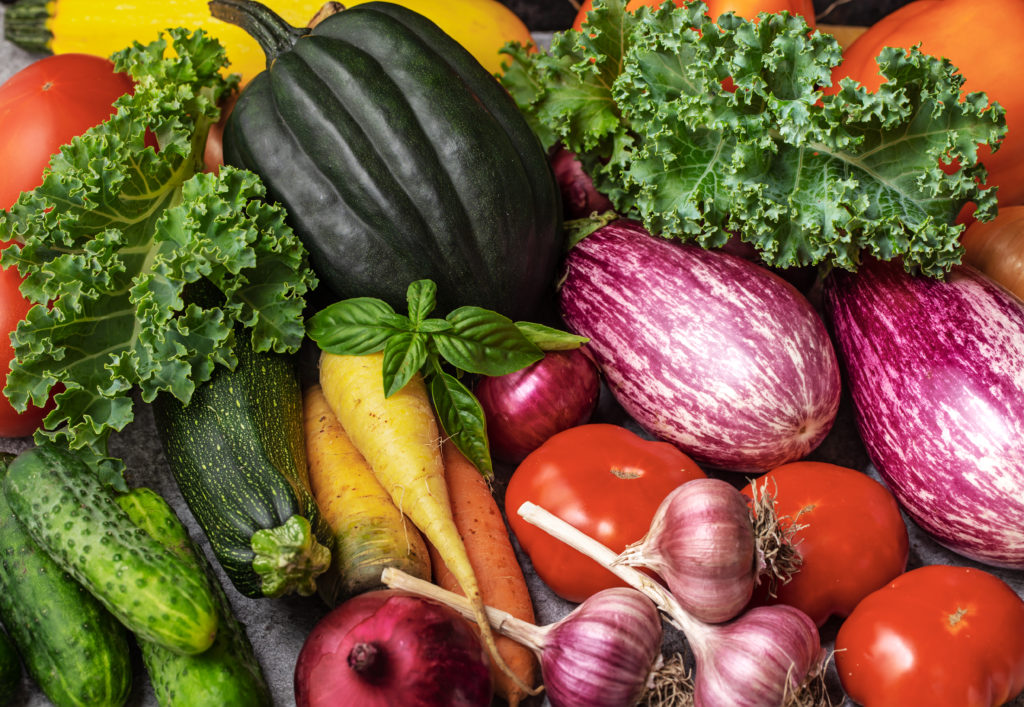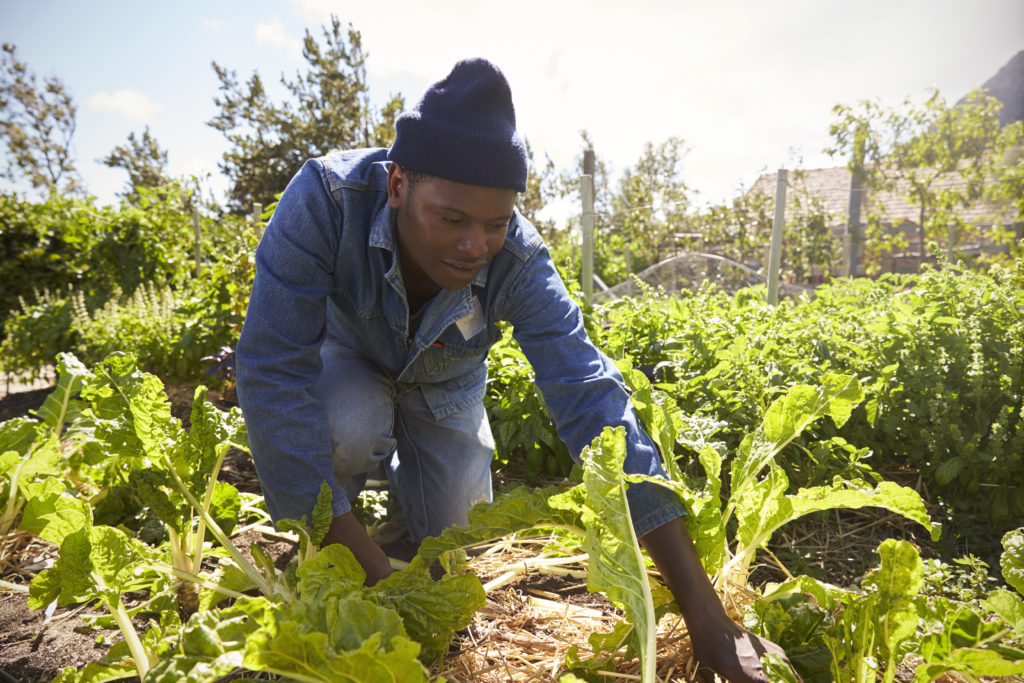Yield became the most important goal in agriculture. Along with this, the development of various types of farming models emerged considering more complex factors such as the ecosystem, human intervention, physical, chemical, edaphic components of the farm. Permaculture gardening is one of these time-tested models that are being practiced up to now. Permaculture is more focused on the cultural practices such as the design of the farm. This model revolves around the care for the ecosystem including the people.
Right now, there is an aggressive push and challenge on industrial companies to switch to using renewable sources. Permaculture became an even vital role in our communities. In fact, there have been global movements regarding the implementation of permaculture practices. Some notable projects are in New Zealand’s Koanga Institute where they hold workshops and training and in China’s Happy Food Farm that grows plants and fruits and breeds fish and chicken where the farm is self-sustained by the crops it grows [1].
Permaculture is defined as a creative design process based on universal ethics and ecological design principles. In simpler terms, permaculture looks into the whole or complete system wherein individuals or organisms are also living harmoniously to their physical environment. Coined by Bill Mollison, permaculture is simply a contraction of two latin words, permanens – to persist indefinitely and culture – the practices that support human occupation. Combining these words, permaculture is a persistent system that supports human existence.
The word permanent is also in reference to the word sustainability because in permaculture, the goal is to have sustainable human settlements and food production systems [2].
Why is permaculture important?
Most of our nature is dominated by perennial plants, trees and long leaf plants. Why is agriculture dominated by annual crops? Why does it not follow the design rules of nature? Thousand years of agriculture had already destroyed our ecosystem. Aquatic ecosystems destroyed by the pesticide-carrying runoff, natural habitats loss by land conversion, climate change, pollution and contamination caused by the use of herbicides, fertilizers, pesticides and even livestock and other agricultural practices that contribute to the devastation of our environment.

What makes permaculture different is that it is a movement concerned with environmentally sound land use and the building of stable communities. It is a sustainable system that in its lifetime can produce more energy than it takes to establish and maintain it. We are working with rather than against nature in order to grow food. We are not only considering the health of the land but also its practitioners. Permaculture, in other words, focuses on nature, people and the good of the earth.
Ethics in Permaculture Gardening
Earth Care
Earth is the planet that sustains us. In order to be alive, we will be needing air, water, food and shelter. Earth, as we all know, is the only place where we get them. Therefore, taking care of the earth would be the logical thing to do to ensure one’s survival. Earth is also composed of living and non-living systems and they are all interconnected and interdependent to one another. When one is affected, all are affected. For example, by caring for the soil, more plants thrive. Not only does it provide us more sources of food, it also supports higher organisms. Beyond food production, taking care of our forests not only ensures us a supply of clean air. The forests play a key role in ensuring supply of fresh water because the process of rain formation and water cycle is inextricably linked to the forests [3].
Care of People
Fundamental to permaculture gardening is caring for the people. In People care, we simply make sure that the needs of the people including food, shelter, employment, health and social relationships are met. We ensure that they have access to those resources necessary for their survival. Central to people care is understanding the power of the community. Individuals can benefit from deepening community links. For example, one may not have the knowledge and skill to grow his own food but by having good networks, he can develop his capacity to live more sustainably and become more self-reliant [4].
Fair Shares
We have and would always belong to a community. In the ethics of Fair Share, we strive to attain only the necessary amount of resources that we need in consideration of the whole community. In a long table of resources, we only take what is enough and never more. The goal is to thrive as a collective, not as individuals. Each member of the community serves as a pillar supporting one another. A collapse of an individual would more often than not cause the collapse of the whole.
Permaculture Design Principles
There are 12 principles in permaculture gardening [5] namely:
Observe and Interact
The first fundamental principle of permaculture is to observe and engage with our environment and value our learnings so we can plan in the future effectively.
Catch and Store Energy
The world is filled with all sorts and forms of energy. We make use of them in the most efficient way like growing your own food and using solar panels for a sustainable way of living.
Obtain a Yield
We have to make sure that what we do is rewarding in any sense, be it tangible like physical yields from plants, fruits and wealth or intangible like happiness and satisfaction.
Apply Self-Regulation and Feedback
There is a need to occasionally check ourselves and our habits and think whether the current actions are beneficial or not.
Use and Value Renewables
It has become a general rule now to always prefer to use renewables rather than highly limited resources. Opt to use solar, wind, and geothermal energies rather than using the non-renewable sources.
Produce No Waste
Use our resources in its utmost efficiency like in eating oranges, eat the pulps, plant the seeds and bury the peels. Nothing goes to waste.
Design from Patterns to Details
Work from the whole, then to the part. Take a step back and see the bigger picture in planning future engagements. It is vital in considering the macroscale perspective before going down to the finer details.
Integrate Don’t Segregate
It is important to produce harmony with one another. This is applicable in plants, people, the whole community in general.
Use Small, Slow Solutions
Small and slow solutions are often the more sustainable ones. It is easier to manage and can adapt to sudden changes in situations. Incremental benefits bring the best overall outcomes.
Use and Value Diversity
Diversity in all forms brings resilience in all forms. A community functions well in the presence of diversity because it brings color and helps tackle problems with a variety of perspectives and solutions.
Use Edges and Value the Marginal
We have to learn to value every element and every little space. A single cog in a machine would often be neglected however it still has its important role of coordinating with other systems in the machine.
Creatively Use and Respond to Change
It is a universally accepted statement that change is the most inevitable aspect of life. All future plans and unexpected situations should be handled in consideration of all the above mentioned principles to attain a true sustainable life.
Application and Practices of Permaculture Gardening
Hugelkultur

In this permaculture gardening practice, large volumes of rotting wood, branches, twigs and even whole trees are buried under the soil creating raised garden beds. After several years, these materials will be decomposed and the garden beds are loaded with organic material and nutrients. As the wood shrinks, it will also create more air pockets for the roots of the plants. This method will also give a slightly longer growing period since the composting process during the first few years of implementation will warm the soil. The buried wood will also absorb the water thus preventing the passing of nutrients into the groundwater. Lastly, because the soils are deeper, these raised beds will be filled with soil life [6].
Agroforestry

By combining agriculture and forestry, this permaculture gardening practice has varied benefits, two of which are reduced erosion and increased biodiversity [7]. Some benefits also include maintenance of soil organic matter and biological activity, more closed nutrient cycling, favorable soil physical properties, control runoff and more efficient utilization of solar energy.
Polyculture

In this permaculture practice, multiple crops are grown simultaneously or in a crop rotation. Although this farm system is more laborious than monoculture, this tends to be beneficial to the soil as well as the environment. There are several advantages associated with this practice. One is a better nutrient utilization. Nutrients that are not utilized by the first crop planted will be favorable to another crop in a crop rotation. Next is that there will be better soil utilization since the soil is used year round. There is also higher crop resistance to plant pests because the plants are grown near each other. Lastly, growing different plants on the same land increases local biodiversity [8].
Permaculture Guilds

Because permaculture is based on natural systems similar to that we see in forests, a guild is grouping a set of living organisms and other components that work harmoniously to help ensure their health and productivity. This practice focuses on the functions rather than the specific species [9]. To make a good permaculture guild, it is important to have its general components which are food for us (what will we be getting from the systems), food for the soil (nutrients needed to grow plants), diggers/miners (deep rooted plants such as trees), groundcover (protects the soil and holds moisture), climbers (useful in areas where land resources may be scarce), supporters (living things such as trees and bushes or nonliving things such as houses, walls and fences) and protectors (protects guild from damaging insects such as repellents and attractants).
If you are looking to start your garden, check out the links in the description for our recommended books and audiobooks.
Don’t forget to download the free ebook too.
Backyard Gardening Book (paperback)
Backyard Gardening Book (audiobook)
Urban Gardening Book (paperback)
Urban Gardening Book (audiobook)
TOP 10 ESSENTIAL TOOLS THAT A BEGINNER GARDENER NEEDS
GARDENING FOR BEGINNERS GUIDE [14 TIPS TO BE SUCCESSFUL]
References
[1] Foodtank. (2015). 16 Successful Projects Highlighting Permaculture Use. Retrieved from https://foodtank.com/news/2015/07/sixteen-successful-projects-highlighting-permaculture-use/
[2] Barth, B. (2016, April 19). modern farmer. Retrieved from Modern Farmer Media: http://modernfarmer.com
[3] Deep Green Permaculture. (n.d.). Deep Green Permaculture. Retrieved from https://deepgreenpermaculture.com/permaculture/permaculture-ethics/
[4] Harland, M. (2013, January 23). Permaculture. Retrieved from https://www.permaculture.co.uk/articles/what-permaculture-part-1-ethics
[5] Waddington, E. (2019). The 12 Principles of Permaculture: A Way Forward. Retrieved from https://ethical.net/ethical/permaculture-principles/
[6] Wheaton, P. (2020). rich soil. Retrieved from richsoil.com
[7] US Department of Agriculture. (n.d.). Agroforestry Practices. Retrieved from https://www.fs.usda.gov/nac/practices/index.html
[8] Folnovic, T. (n.d.). Polyculture Production System for Sustainable Farming. Retrieved from https://blog.agrivi.com/post/polyculture-production-system-for-sustainable-farming
[9] Never Ending Food. (2019). Permaculture Guilds. Retrieved from http://www.neverendingfood.org/b-what-is-peraculture/permaculture-guilds/

